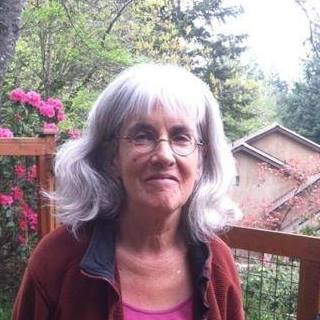In regard to the use of dangerous diesel-filled backup generators, the city staff's "answer to questions" assures the council that such generators might only be used temporarily, in case of emergencies. Again this explanation is not reflective of what is contained in the ordinance and guidelines you passed, which allow for both temporary and permanent diesel-fueled generators. Where the Berkeley law says that they will only be used in case of a power outage the word "only" is crossed out. The telecoms are free to make use of them as much as they want.
As far as using them in emergencies, did you ever stop to think that it might not be such a great idea to put large boxes containing highly-flammable diesel fuel throughout the city in the event of a wildfire or earthquake event? (News reports of the recent big fire in Santa Rosa reported fuel-filled generators exploding everywhere.) As PG and E pointed out in a recent insert to all its customers, the only reliable phone connections during an emergency are wired landlines. Fifth generation (5G) installations are not meant to improve phone service, but rather to provide support for a variety of geewhiz applications, like faster download speeds and the Internet of Things.
Other cities' laws have very detailed fire safety provisions, while Berkeley's laws have only the most minimal ones. There is nothing in federal law preventing the city from ensuring greater protection from wildfires. What ethical justification could there be for not doing so?
The worst aspect of Berkeley's laws is that they do not prevent 4G/5G antennae from being installed right next to people's homes, or next to playgrounds, health facilities, senior apartments, facilities for first responders, etc. These setbacks need to be at least 500 feet, but 1000 feet would greatly preferable. The city staff is claiming that the reason cities that have used sound legal language to ensure that people's homes are protected have not been sued is because no telecom even wants to put 5G small cells in those cities. (The lawyer hired by WiRED, Berkeley's EMF-awareness community group, has identified the Califonria cities which have laws that can withstand legal challenge, and do not allow the installations next to homes, are Encinitas, Mill Valley, Calabasas, and Petaluma.)
Here again the staff's "answer to city council members' questions" is inaccurate, because this ordinance passed by the Encinitas city council says they've received numerous applications for small cells. (Ordinance 2019-12, p. 11) Click Here
To avoid confusion, it should be noted that the very carefully-crafted provisions protecting the Encinitas community were not in this early ordinance, and its passage resulted in a tremendous amount of protests at city council meetings, until the city amended the ordinance with a policy that was passed on October 30, 2019 and revised again on June 10, 2020. We consider their updated policy to be one of several "model ordinances." After the 2019 amendments, there were was never another small cell application in Encinitas, according to Susan Foster who was a consultant there.
Telecoms had also approached the city officials in Petaluma about installing 5G small cells there, which resulted in the city passing a very strong ordinance that also seems to have discouraged futher inquiries. Click Here
So it is incorrect, in the above instances, that the reason those cities have not been sued is because the telecoms had no interest in installing 5G there, as city staff has claimed. Rather, it's because the cities had such excellent ordinances that the telecoms decided not to continue their efforts to force 5G down their throats.
We assume the same also holds true in Mill Valley and all the other Marin cities and unincorporated areas, that the reason 5G has not been installed is because they pre-emptively passed very strong and legally-sound ordinances. It appears the wealthy residents of Marin County will not have access to the much-touted spectacular benefits of having every item in their lives connected via electrosmog. What could they be thinking?
Because of the financial and moral conflict of interest of the outside law firm that wrote Berkeley's guidelines and ordinance, the City Council needs to start over from scratch. Once both laws were passed on 2nd reading of the ordinance (which happened on July 28th, 2020), we have been told no substantive changes can be made without starting over with a new first reading. That's what we are urging you to do--Start over.
We found a copy of a sample model small cell ordinance that is as different from Berkeley's as night is from day. Click Here
Here is the link to Berkeley's new ordinance and guidelines amending Municpal Code section 16.10. Click Here
The above model ordinance could be a good place to start. Outstanding ordinances from cities such as Encinitas and Petaluma, including later revisions, could also be used as a model. The work has already been done to write a completely legal ordinance that remains thoroughly protective of the community. The attorney for WiRED has identified additional ways that a sample ordinance could be made stronger. (However, we should note that he had no part in the creation of this letter.)
Now the city just needs to demonstrate the will to adopt laws that will protect Berkeley from the disastrous effects, extraordinary fire dangers, and aesthetic quagmire created by installing these 4G/5G structures everywhere-- the way so many other California city councils have succeeded in doing.
Sincerely,
Jenny Miller
(Note: You can view every article as one long page if you sign up as an Advocate Member, or higher).





